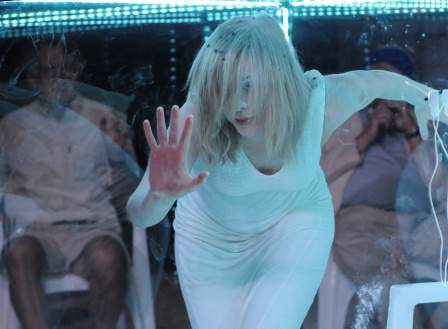The Seagull
With his adaptation of Chekhov's famous play, The Seagull, director Benedict Andrews lives up to his reputation as one of Sydney's most confronting and challenging directors by raising the curtain on the resentful, miserable, and resolutely alienated Masha smoking a bucket bong. In one fell swoop, Chekhov's nineteenth century Russian country estate is transformed into a dinky fibro shack on the Australian coast where people have very little to do other than get wrapped up in the intricate narratives of their own lives. The play was described by Chekhov as a comedy; and it is - in a generally bitter and twisted kind of way. Occasional moments of comic relief are provided by Sorin, who wanted to be a writer and never got around to it, but for much of the play Andrews' cages his performers in a featureless glass box - a placeless place, with no discernible way in or out. In the face of the irrevocable nature of time, Chekhov's characters cling to momentary symbols in a vain effort to define themselves and each other. The Seagull is a meditation on how art produces life and life produces art, and the casualties of the process.
Overview
I’ll be honest: earlier this year, Belvoir put a wild duck on stage and a small part of me hoped there would be a repeat of the bird scenario in The Seagull. However, given that the eponymous seagull of Chekhov’s play is shot early on and inescapably symbolic, it’s just as well that director Benedict Andrews doesn’t give the audience one to coo over.
Instead, Andrews lives up to his reputation as one of Sydney’s most confronting and challenging directors by raising the curtain on the resentful, miserable, and resolutely alienated Masha smoking a bucket bong. In one fell swoop, Chekhov’s nineteenth century Russian country estate is transformed into a dinky fibro shack on the Australian coast where people have very little to do other than get wrapped up in the intricate narratives of their own lives. The flat, grey lake in the distance is, quite often, all they have to focus on. Although the setting is distinctly Australian, Andrews’ maintains simplified Russian character names and places. The ingénue Nina, the diva Irina, the angsty Konstantin, and the middlebrow writer Trigorin all ask questions about what constitutes real happiness, freedom and love; tragically, they seem innately incapable of answering them.
Konstantin aspires to write plays that will overpower the artificial constraints of traditional theatre and stages an experimental piece set “200,000 years from now.” When his mother patronisingly dismisses it as “a tantrum disguised as theatre”, her beau’s smiling superciliousness only serves to stoke her son’s simmering Hamlet aspirations. Heart-sick with addled ambition, Konstantin shoots a seagull and offers it to his lover, Nina, but she is “too ordinary” to figure out whether it symbolises his frustrated creativity or her own fragile idealism.
The Seagull was described by Chekhov as a comedy; and it is – in a generally bitter and twisted kind of way. Occasional moments of comic relief are provided by Sorin, who wanted to be a writer and never got around to it, but for much of the play Andrews’ cages his performers in a featureless glass box — a placeless place, with no discernible way in or out.
In the face of the irrevocable nature of time, Chekhov's characters cling to momentary symbols in a vain effort to define themselves and each other. The Seagull is a meditation on how art produces life and life produces art, and the casualties of the process.







